Latest Gear Live Videos
Microsoft announces Surface tablet

Posted by Andru Edwards Categories:
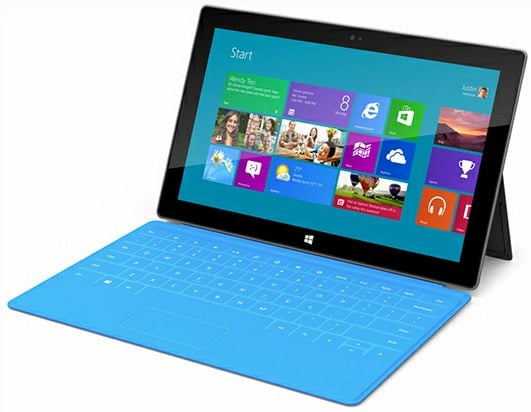
The rumor mill was calling for a new Microsoft tablet to be announced today, and thats exactly what happened. Just a few minutes ago, Microsoft CEO Steve Ballmer unveiled the Microsoft Surface tablet. The Microsoft Surface is a companion to Windows 8, with Microsoft saying that it's "a tablet that's a great PC, and a PC that's a great tablet." The hardware is 9.3mm thin with edges beveled at 22 degrees. The casing is all magnesium, which is a first for a computer, making the Surface weigh in at 1.5 pounds. Oh, and it's also got a 10.6-inch display, so it's here to compete with the big boys. As you'd expect, Wi-Fi and Bluetooth are present, as is a built-in kickstand, Gorilla Glass, and an amazingly thin 3mm cover that also doubles as a keyboard for touch typing.
Surface will be available in the model we just detailed, as well as a Pro model that supports a higher resolution display. It's got the same chassis, same kickstand, and supports the same accessories, but this model wuns full Windows 8 Pro rather than just Windows RT. It also supports digital ink by way of a stylus. When the Surface detects the pen, it stops accepting touch input, making it easy to write on. The upgraded model also has a DisplayPort, allowing you to plug it in to a larger monitor, this giving you the regular, full PC experience.
Advertisement
AMD Radeon HD 7970 review

Posted by Andru Edwards Categories: Accessories, PC / Laptop, Product Reviews, Video Games,
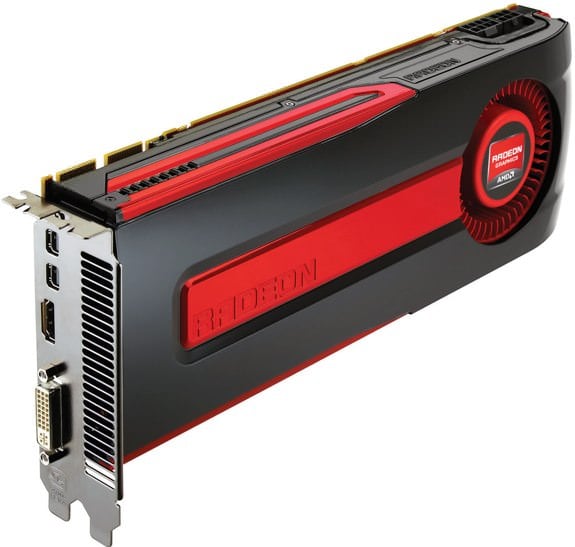
The perpetual war for supremacy between AMD and Nvidia constantly leaves enthusiasts dodging shrapnel: When you want the best video card you can afford, why buy one now instead of waiting for the better one the competing chipset designer will undoubtedly release in a few months? This leaves reviewers in a tough spot, too, as we're constantly proclaiming that nearly every new card is the fastest ever. But because you can only live in the world you live in, we're obliged to go there. So, here goes once again: The just-released AMD Radeon HD 7970 ($549 list) is the latest fastest and most feature-rich single-GPU card ever, surpassing our previous Editors' Choice winner, the Nvidia GeForce GTX 580.
Though we have little doubt that Nvidia will yank back that title with its next generation of cards, the 7970 is an impressive achievement for the moment. (It's rumored to become widely available by early January of 2012.) The inaugural member of the Southern Islands family, it utilizes a fresh architecture AMD refers to as "Graphics Core Next." Based on a new 28nm process technology and utilizing more than 4.3 billion transistors, Graphics Core Next uses a revised instruction set architecture, gives each compute unit the ability to simultaneously execute instructions from multiple kernels, and delivers an increased number of instructions per clock cycle per square millimeter of GPU space. The result, so AMD claims, is "designed for high utilization, high throughput, and multitasking."
Click to continue reading AMD Radeon HD 7970 review
Asus Transformer Prime: Tegra 3 tablet, $499

Posted by Andru Edwards Categories: Accessories, Google, Handhelds,

The Asus Eee Pad Transformer Prime is ready for its close-up and under the hood it sports Nvidia's next-generation Tegra 3 mobile processor. That makes the Transformer Prime the first tablet to feature the quad-core System-on-a-Chip (SoC), which Nvida says provides three times the graphics performance of its current Tegra 2 chip while soaking up 61 percent less power.
The 10.1-inch Transformer Prime is nice and thin at 0.33 inches and weighs in at 1.29 pounds, Asus said Tuesday on a conference call with reporters. Thanks to the Tegra 3's improved power consumption, the tablet's battery life is rated for up to 18 hours, although that's when you combine it with the optional mobile dock and keyboard which Asus is also offering, naturally, as part of the Transformer Prime package.
Without the accessory, you're still getting up to 12 hours of battery life, which Asus was happy to point out is enough for "a trans-ocean flight, all-night game session, viewing several movies on a long road trip, or even video recording, editing, and then playing back your child's school play."
The Tegra 3 chip, the first quad-core ARM Cortex A9 CPU, significantly boosts 3D gaming and Internet browsing on tablets like the Transformer Prime, thanks to a 12-core GeForce GPU that's also part of the next-gen SoC, according to Nvidia.
Click to continue reading Asus Transformer Prime: Tegra 3 tablet, $499
Nvidia launches Tegra 3, a “PC-class” mobile CPU

Posted by Andru Edwards Categories: Smartphones, Corporate News, Handhelds,

Nvidia has officially launched the Tegra 3 quad-core mobile chipset. It will be the first quad-core ARM-based chipset to appear in shipping products when it comes to market in the Asus EEE Pad Transformer Prime tablet.
Nvidia marked the official announcement by releasing a bunch of screen shots and performance details showing how Tegra 3 improves Web browsing, battery life, and—most importantly for Nvidia—gaming.
"Tegra 3 is about five times the performance of Tegra 2," said Matt Wuebbling, Nvidia Tegra's director of product marketing.
The gaming improvements are striking, and Nvidia spent a lot of time showing them off. You get more realism and more special effects on Tegra 3: much more realistic water simulations, blur effects, smoke, damage, textures and dynamic lighting. That comes in part from the chipset's new 12-core GPU, with triple the performance of Tegra 2's unit, Wuebbling said.
Click to continue reading Nvidia launches Tegra 3, a “PC-class” mobile CPU
Motorola Photon 4G: Hands-on

Posted by Andru Edwards Categories: Smartphones, Features, Handhelds,
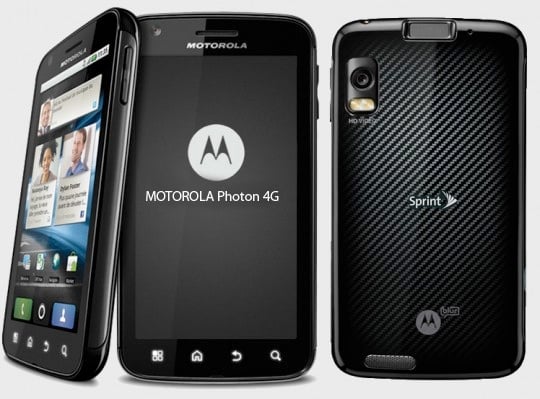
It's big, it's businesslike, and it might turn into a laptop like the groundbreaking Motorola Atrix 4G. Sprint's brand-new Motorola Photon 4G will face down the HTC EVO 3D this summer in a battle of the high-end Android super-phones. We got some time with it just before today's announcement, to check out the new device.
The new Photon 4G is one of 10 Motorola phones that Sprint plans to introduce in 2011, including the Triumph for Virgin Mobile, the Xoom tablet, and the XPRT and Titanium for Sprint. The two companies introduced the Photon and Triumph today at an event in New York City.
The Motorola Photon 4G is a huge 5.6-ounce, 2.6 by 5 by 0.5-inch smartphone with a downright gorgeous 4.3-inch, 960-by-540 screen. There's something very rich and deep about this screen; it may just be the wallpapers that Sprint and Motorola chose, but everything looked very sharp. The phone is fast, too, with a dual-core Nvidia Tegra 2 processor running Android 2.3. There's an 8-megapixel camera on the back, a 1-megapixel camera on the front, an HDMI out port, a kickstand on the back, and 16GB of on-board storage.
How does the Photon feel? Big. Solid. Glossy. The Photon feels a lot like Verizon's Motorola Droid X2, although it's rounded rather than squarish; this is a large, heavy slab of power with a whole lot of customized Android icons. The few apps I sampled ran smoothly. I asked the Sprint and Motorola reps whether the Photon would be more stable than the notoriously buggy Atrix, but they dodged the question.
Click to continue reading Motorola Photon 4G: Hands-on
Motorola Droid 3 spec leak: dual-core, 4-inch qHD display

Posted by Andru Edwards Categories: Smartphones, Handhelds, Rumors,
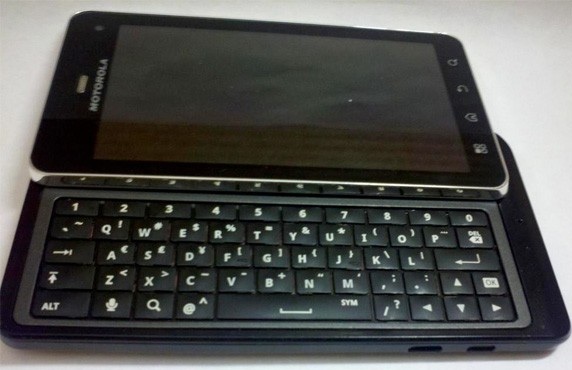
What we've got above is a leaked image of the Motorola Droid 3, but that doesn't really tell us much about what's happening on the inside of the device. However, TechnoBuffalo is saying that they've got the goods, and if they are to be believed, this'll be a nice upgrade over the current Droid 2 smartphone. The display here is reportedly a 4-inch qHD screen, and inside there's a dual-core processor (similar to the Droid X2,) front-facing camera, and 8 megapixel camera around back. The other pertinent detail here is that the Droid 3 won't be packing a 4G LTE chipset.
Nvidia GeForce GTX 590 review

Posted by Andru Edwards Categories: Accessories, Features, PC / Laptop, Product Reviews,

The months-long jockeying for position between AMD and Nvidia has led to this moment: Who has the faster flagship video card? Nvidia held the crown for a long while thanks to its powerful and polished GTX 580, still the best single-processor card on the market. But when AMD released its dual-GPU Radeon HD 6990 earlier this month, and it delivered blistering benchmark results along with a sky-high $699 list price and an ultra-noisy fan, it looked like AMD might own the top tier this generation. Now that Nvidia has released its own dual-GPU card, the Nvidia GeForce GTX 590 (also $699), we definitively know the answer: AMD just wins the performance crown. Nvidia's card has some solid reasons to recommend it—much better noise characteristics, it will fit in a (slightly) wider variety of cases—but for this much money you probably want the fastest card there is. And the GTX 590, in spite of its virtues, is not quite it.
The GTX 590 is, however, packed with power. You'd expect that from any two-GPU card in general—the last one Nvidia released was the GTX 295, in early 2009—and especially from one that essentially fuses two powerful GF110 GPUs (the kind used in the GTX 580). It sports a total of 1,024 CUDA processing cores, 128 texture units, 96 ROP units, and 32 tessellation engines for making the most of one of the most sought-after DirectX 11 (DX11) features. The card's graphics clock runs at 607 MHz, its processor clock at 1,215 MHz, and its memory clock at 3,414 MHz. It's loaded with 3,072MB of GDDR5 memory for the frame buffer, which operates over a 384-bit memory interface.
Click to continue reading Nvidia GeForce GTX 590 review
Nvidia GeForce GTX 590 dual-GPU video card released

Posted by Andru Edwards Categories: Accessories, PC / Laptop,
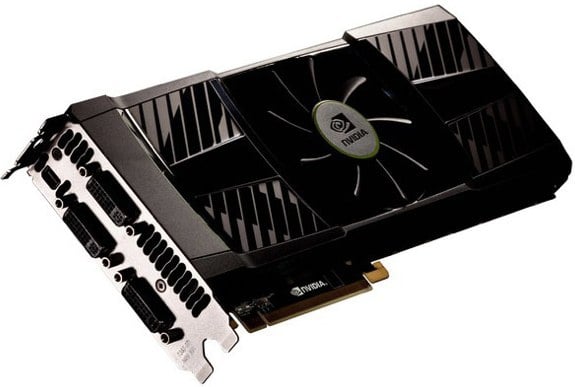
Hot on the heels of AMD's recently released Radeon HD 6990, Nvidia introduced its own new flagship video card today, the GeForce GTX 590.
Nvidia's first dual-GPU video card since the GTX 295 in early 2009, the GTX 590 unites a pair of GF110 GPUs (the kind used in the GTX 580, the fastest single-GPU card on the market) on a single card. This means you get of 1,024 CUDA processing cores, 128 texture units, 96 ROP units, and 32 tessellation engines. The card's graphics clock runs at 607 MHz, its processor clock at 1,215 MHz, and its memory clock at 3,414 MHz. It's loaded with 3,072MB of GDDR5 memory for the frame buffer, which operates over a 384-bit memory interface.
Click to continue reading Nvidia GeForce GTX 590 dual-GPU video card released
NVIDIA shows off quad-core Tegra tablet processors

Posted by Patrick Lambert Categories: Corporate News, Handhelds,
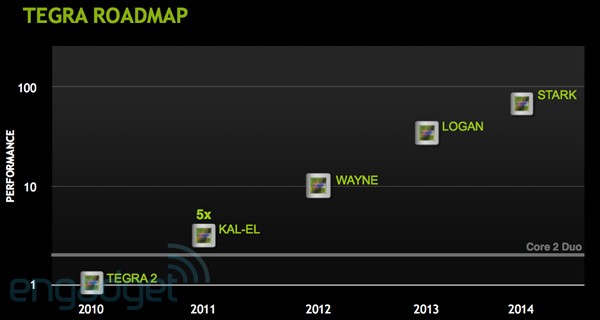
Nvidia announced some new Tegra chips aimed at powering some upcoming tablets and smartphones this week. The code-named "Kal-El" chips are able to display some amazingly high def video streams, both on the devices displays and on large TVs. In the demonstration, the stream was being decoded on a developmental device, scaled down to that tablet's screen at 1366 x 768 resolution, and displayed on a connected 30-inch, 2560 x 1600 TV. The company says tablets with the new chips should come out around August, with phones following for the Holidays. Check out videos at the link below.
Read More  | Engadget
| Engadget
iTunes 10.1.1 released, squashes bugs

Posted by Andru Edwards Categories: Apple, Music, Software,
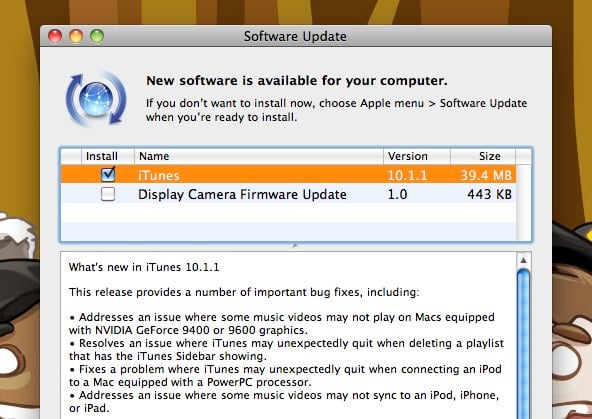
If you're an iTunes user, it's time to upgrade once more, as Apple just released iTunes 10.1.1 into the wild. The update seems mostly aimed at fixing a few bugs, so don't expect anything fancy to show up, okay?










